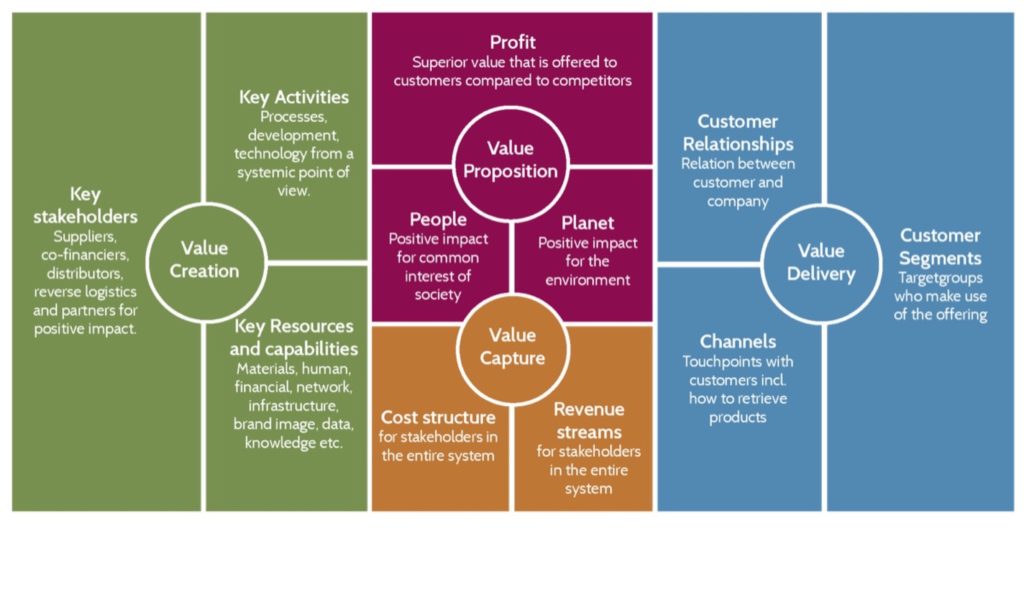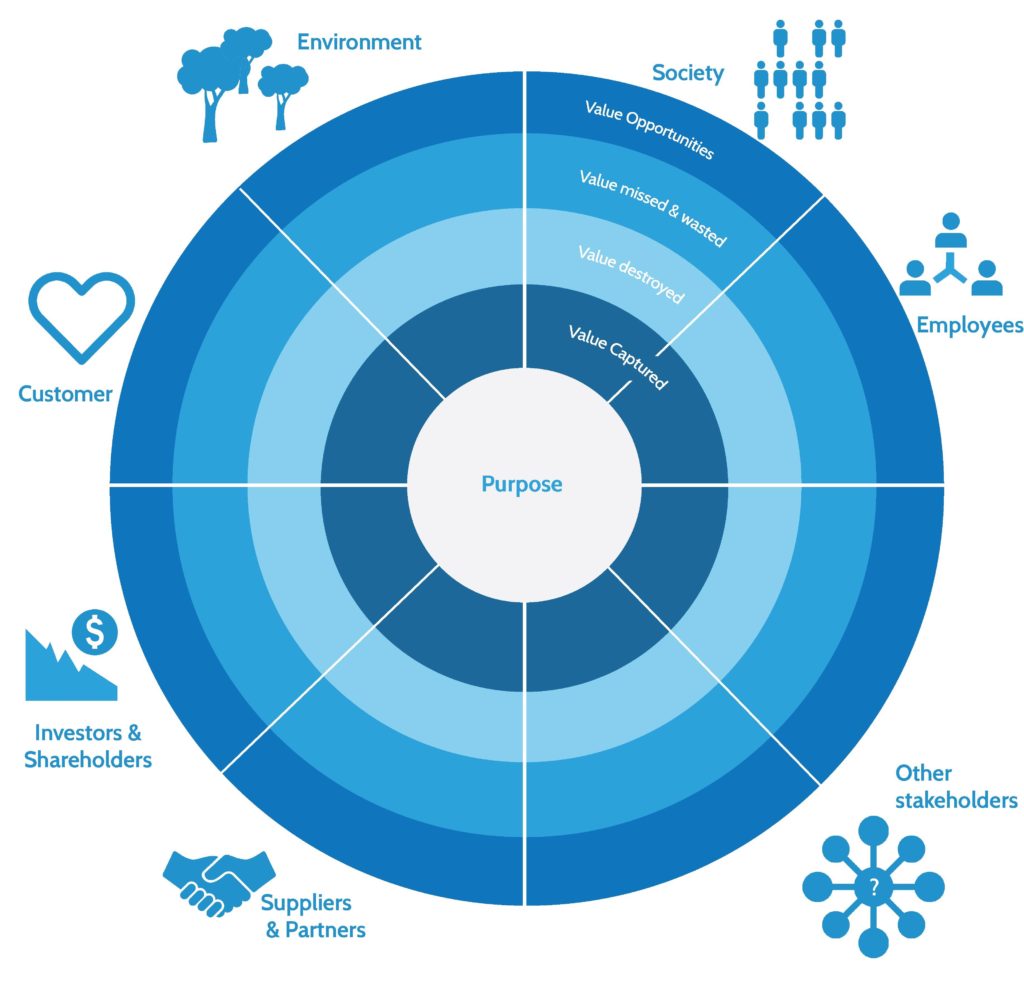This is a re-post on tools for sustainable business model innovation and features the value mapping tool and sustainable business model canvas.
What is a business model? A business model describes how a company does business and what its value proposition (benefits or offering to customer), value creation (resources, suppliers and other partners who help create value) and value capture mechanisms (cost structures and revenue streams) are.
What are sustainable business models? Sustainable business models consider a much wider group of stakeholders than just customers, and explicitly consider society and environment as stakeholders. They go beyond creating value for a customer and include concerns about the benefits and harms to society and the environment by the way business is done. This is a much more systemic view on doing business than making money by delivering benefits and value to customers.
I am interested how current business models can become more sustainable and how start-ups can develop sustainable business models from the outset.
Together with my colleagues Sam Short, Padmakshi Rana, and Steve Evans, I developed the Value Mapping Tool, to assist in ‘sustainable business modelling’ – the process of inventing new sustainable business model ideas.
Value mapping tool. Source. Bocken, Short, Rana, Evans (2013)
This tool can help users to:
- Understand the positive and negative aspects of value in a network of stakeholders
- Identify conflicting values (i.e. where one stakeholder benefit creates a negative for another stakeholder)
- Identify opportunities for business model redesign – especially to improve societal and environmental impact
Here is a simplified process of using the value mapping tool to use for your business:
Each ring in the diagram represents a different brainstorm. During each of these brainstorms, all of the following “stakeholders” need to be considered:
- Customers – perceived and actual benefits and negative impacts. You may want to break this down into different customer segments.
- Network actors – in short, the firm and its supply chain responsible for creating value. This may be broken down into particular key suppliers or partners as can be seen above.
- Environment – benefits (afforestation) and negative impacts (e.g. emissions to air).
- Society – benefits (e.g. health) and negative impacts (e.g. working conditions)
Brainstorm 1: the purpose of the business is discussed. Why is the business here in the first place? What is the product or service offered by the company or business unit? What is the primary reason for the existence of the business (this should not be primarily financial)?
Brainstorm 2: what value is created for the different types of stakeholders? What positive value is created and what negative value do all the stakeholders mitigate?
Brainstorm 3: what is the value destroyed or missed or negative outcomes for any of the stakeholders? Consider for example, waste to landfill or loss of local employment caused by offshoring. Are there contradicting impacts at a global and local level? Is the business missing an opportunity to capture value, or squandering value in its existing operations? For example, are assets, capacity and capabilities under-utilised? Are potentially useful materials going to landfill?
Brainstorm 4: This brainstorm is intentionally put at the end and is about blue-sky thinking. The focus is on turning the negatives into positives. What new positive value might the network create for its stakeholders through introduction of activities and collaborations? What can you learn from competitors, suppliers, customers or even other industries?
To move from ideas to implementation the brainstorm may be followed up by roadmapping the activities and business model elements to be changed. A great way of doing this is using the Business Model Generation work by Osterwalder and Peigneur (see www.businessmodelgeneration.com for more details). We have adapted their “strategy canvas” here:

Overview of business model elements in ‘sustainable business model canvas’. www.businessmodelgeneration.com, adapted by Bocken, Schuit, Kraaijenhagen (2018)
For a more detailed discussion of the value mapping tool and sustainable business model canvas, the full research articles can be found here:
Bocken, N., Short, S., Rana, S., Evans, S. (2013) A value mapping tool for sustainable business modelling”, Corporate Governance, 13(5) .482 – 497. DOI link: 10.1108/CG-06-2013-0078
Bocken, N. M., Schuit, C. S., & Kraaijenhagen, C. (2018). Experimenting with a circular business model: Lessons from eight cases. Environmental innovation and societal transitions, 28, 79-95. DOI link: https://doi.org/10.1016/j.eist.2018.02.001
The guide for facilitators and more info can be found here

